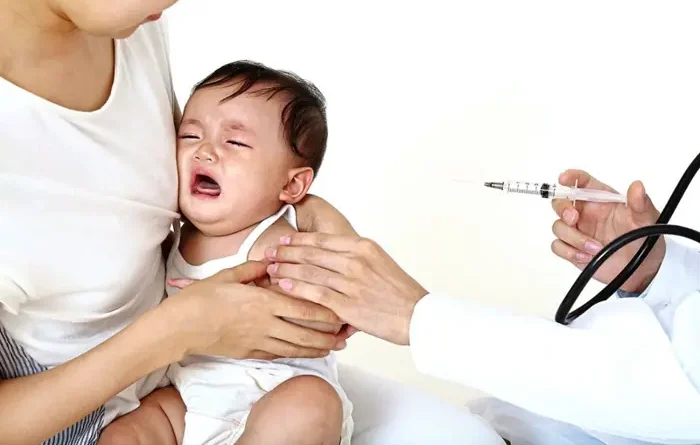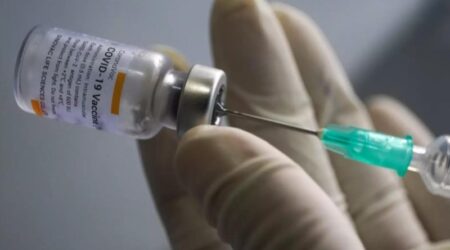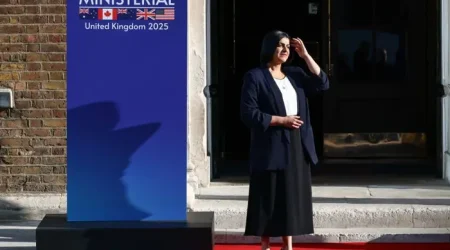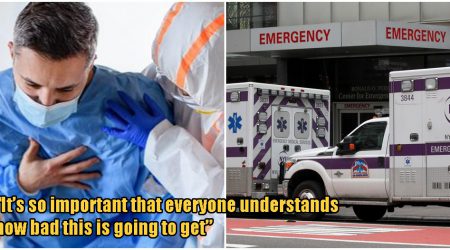The only way to eradicate polio is to get vaccinated
According to the World Health Organization (WHO), the only human disease that has been officially eradicated until now is smallpox.
This means that there is no longer any new smallpox case detected globally.
Among the diseases targeted for eradication in the future is polio – but how achievable is this mission?
What is polio?
Polio, or poliomyelitis, is a highly infectious disease caused by the poliovirus that can infect nerves in the spinal cord or brain stem, leading to paralysis.
It usually affects children under five years old but anyone who has not been vaccinated is at risk of being infected.
The disease spreads through faecal-to-oral and oral-to-oral transmission, and one of the risk factors for transmission is the lack of access to clean water and good sanitation.
Most people who get infected have no symptoms or only experience mild flu-like symptoms (e.g. fever, headache and sore throat).
Some may have more severe flu-like symptoms, as well as stiffness or pain in the neck or limbs.
Most infected individuals will recover after a few days (non-paralytic polio), but in some cases, the disease may cause permanent paralysis (paralytic polio), which can also lead to death due to paralysis of the respiratory or chest muscles.
Why is polio dangerous?
Polio is a debilitating and life-threatening disease that can lead to severe complications like:
> Permanent paralysis: Weakness or inability to move the arms, legs or both.
It is estimated that one in 200 infections leads to paralysis and five to 10% of paralysed patients will die because their breathing muscles are paralysed, hence they are unable to breathe.
During polio outbreaks in the past, “iron lungs” had to be used to assist patients to breathe.
An iron lung, the main portion of which consists of a horizontal metal cylinder, essentially acts as a mechanical respirator, wherein a bellows positioned at the foot end of the machine moves in and out to produce changes in pressure that stimulate breathing.
> Meningitis: Inflammation of the protective membrane covering the brain and spinal cord.
It may happen to about one to five in 100 infected people.
> Post-polio syndrome: This is a condition that affects polio survivors long after their recovery from the initial infection.
It affects 25-40% of polio survivors, who may experience symptoms like muscle weakness, joint pain and fatigue 15 to 40 years after the initial infection.
It is not contagious or life-threatening but can affect one’s ability to function independently.
> Other complications: These include chronic pain and muscle shortening that causes deformed bones or joints.
Worldwide initiative
In 1988, the Global Polio Eradication Initiative (GPEI) was established by the WHO and its partners with a mission to eradicate polio from the world.
Due to the initiative, more than 2.5 billion children have been immunised against the disease and an estimated 20 million cases of paralysis in children have been prevented.
Since then, polio has been practically eliminated from most parts of the world – cases have decreased by over 99%, from an estimated 350,000 cases in more than 125 endemic countries to just two endemic countries today i.e. Afghanistan and Pakistan.
However, intermittent outbreaks of poliovirus variants may still occur in other countries due to low immunisation rates or other factors.
This happened in Malaysia at the end of 2019, when we saw the first polio outbreak in 27 years.
Four cases were reported in Sabah and the children were found to have not received or completed their polio immunisations.
Prior to this outbreak, the last reported polio case in Malaysia was in 1992 and Malaysia was declared polio-free since 2000.
Thankfully, due to a proactive effort by the Health Ministry to contain the outbreak, the WHO has once again declared Malaysia to be polio-free as of September 2021.
The role of vaccination
Vaccination plays a major role in preventing and eradicating polio since there is no cure or specific treatment for the disease.
There are two types of polio vaccines:
> Inactivated polio vaccine (IPV): Contains dead polioviruses and is administered via intramuscular injection.
> Oral polio vaccine (OPV): Contains live polioviruses and are administered through the mouth.
In Malaysia, polio vaccination is part of the national immunisation programme.
IPV is given as the hexavalent vaccine that protects against tetanus, diphtheria, pertussis, hepatitis B and Haemophilus influenzae type b, in addition to polio.
The vaccine is given to children at the ages of two, three, five and 18 months.
The world is on the brink of eradicating polio but comprehensive political, economic and social education efforts are required to reach this goal.
Routine polio immunisation needs to be strengthened by ensuring that all infants – no matter their location, status or citizenship – complete their polio vaccinations.
Apart from that, a robust disease surveillance programme and quick responses to outbreaks are also vital to this effort.
By working together, we can achieve our mission of ending polio once and for all!
Datuk Dr Zulkifli Ismail is a consultant paediatrician and paediatric cardiologist. This article is courtesy of the Malaysian Paediatric Association’s Positive Parenting programme in collaboration with expert partners. For further information, please email [email protected]. The information provided is for educational and communication purposes only, and it should not be construed as personal medical advice. Information published in this article is not intended to replace, supplant or augment a consultation with a health professional regarding the reader’s own medical care. The Star does not give any warranty on accuracy, completeness, functionality, usefulness or other assurances as to the content appearing in this column. The Star disclaims all responsibility for any losses, damage to property or personal injury suffered directly or indirectly from reliance on such information.















Leave a Reply